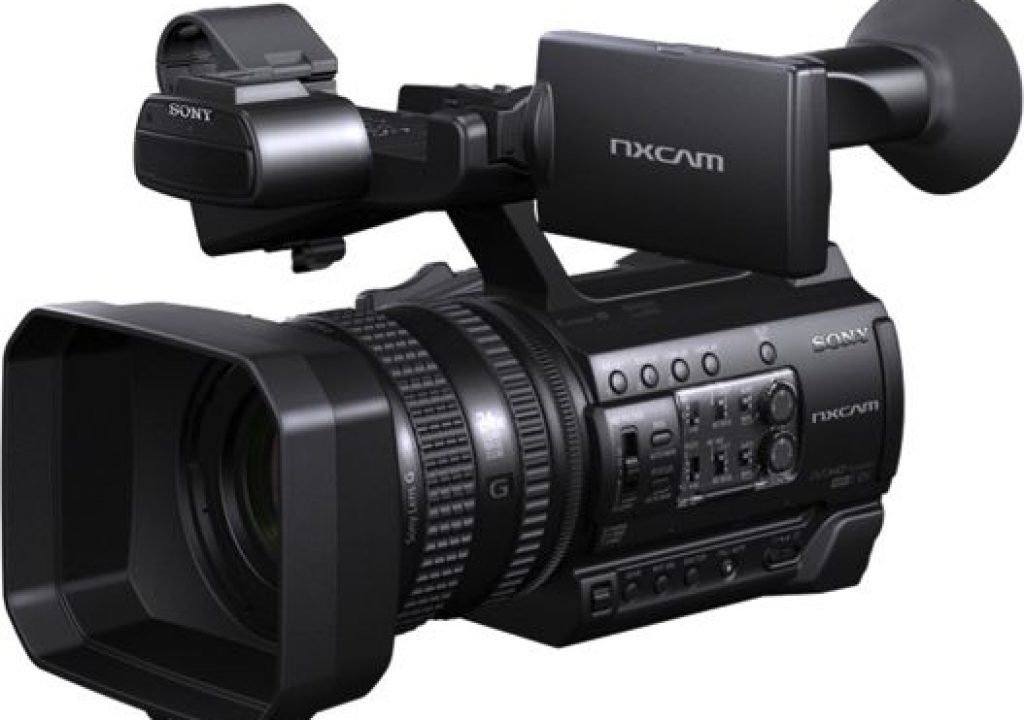Tons of products are geared for the “entry level” professional, but what does that really mean? Who are the entry-level users and what kind of equipment best serves their needs? These are the questions Sony’s engineers asked and answered in the process of developing the new HXR-NX100 handheld camcorder, a product that redefines the entry level for today’s imaging professionals.
With a large, 1.0″-type sensor, flexible Full HD recording options and proper manual controls,
the HXR-NX100 is a great place to start.
Tons of products are geared for the “entry level” professional, but what does that really mean? Who are the entry-level users and what kind of equipment best serves their needs? These are the questions Sony’s engineers asked and answered in the process of developing the new HXR-NX100 handheld camcorder, a product that redefines the entry level for today’s imaging professionals.
The new camera is designed for students and YouTubers, for anyone stepping up from consumer cameras and for anyone making the transition from videotape to memory recording. These shooters require beautiful pictures and substantial image control in a camera body that looks professional. The HXR-NX100 delivers on all counts.
“The Grand One” – Sony’s 1.0″-type sensor
Image sensor size is a major determinant of camera capability. For example, the small sensors of three-chip cameras are particularly suited to run & gun corporate video, event video and news. Large single-sensor cameras are also wonderful, for their sensitivity, resolution and cinematic ability to flatter your subjects by blurring the background. Sony understands the advantages of both categories because we’re a leader in both. Now we’ve created a 1.0″-type sensor that combines advantages from both worlds.
For flexible imaging, the 16:9 active area of 1.0″-type sensor is slightly larger than the Super 16 film frame.
Similar in size to the Super 16 film frame, the 1.0″-type sensor is larger than the typical 2/3″ and 1/2″-type ENG sensors, and many times larger than other entry-level sensors. So the HXR-NX100 sensor delivers stunning resolution (14.2 million effective pixels) with absolutely no sacrifice in sensitivity (1.7 lux minimum illumination at 1/30 sec. shutter, iris and gain auto). And it delivers the beautiful “bokeh” of background blur you’d expect in Super 16 film. You can use selective focus to flatter your subject and direct audience attention within the frame. Yet you can also stop down the lens to experience the easier focusing and run & gun shooting style of ENG cameras.
Approximate size comparison of the active 16:9 area of Sony’s single, large, 1.0″-type sensor versus a 16:9 1/4.7″ sensor. Even three of the smaller sensors don’t come close. You benefit from high sensitivity, high resolution and background defocus.
Codecs that balance cost versus quality
In today’s world, entry-level users can record uncompressed. But the high bitrates will quickly fill up your memory cards, drive up the cost of your hard disk storage and slow down your file transfers. To save money for entry-level users, compression still makes sense. The trick is to strike an intelligent balance between high picture quality and money-saving bitrates. That’s why Sony created the XAVC® family of codecs and that’s why we endowed the HXR-NX100 with XAVC S recording. You get the advantages of contemporary encoding technology, a robust 50 Mbps bitrate and a convenient mp4 file wrapper.
For users who elect to continue working with legacy formats, the camera also offers AVCHD® and DV™ recording.
Manual controls to learn shooting skills
It’s hard to move up in the professional world if you can’t operate iris and focus. That’s why Sony’s G Lens in the HXR-NX100 features three separate control rings for zoom, focus and iris. You can take complete command of the image. In addition, a 4-step mechanical Neutral Density filter helps deliver out-of-focus backgrounds, even in bright sunlight. Filter positions include Clear, 1/4ND, 1/16ND and 1/64ND.
Take charge of your image with independent rings for focus, zoom and iris.
Thanks in part to the large sensor size, the lens can go fairly wide. The 12x zoom starts from a 35mm equivalent of 29mm (in 16:9) on the wide end to 348mm in full tele. Maximum aperture varies from F/2.8 to F/4.5. If you need to zoom in even further, you can effectively double the focal length with Sony’s Clear Image Zoom, and double it again (to a maximum of 48x) with the Digital Extender.
Of course, the camera has a full roster of additional features. Sony’s Multi Interface Shoe (MI Shoe) works with compatible wireless microphones, like the UWP-D11 and D12, as well as compatible video lights like the HVL-LBPC, all sold separately. Two SD card slots enable Simultaneous Recording or Relay Recording. In addition to the MI Shoe, interfaces include HDMI® output, Multi/Micro USB, XLR audio inputs, remote terminal, and BNC composite output.
But the HXR-NX100 is much more than the sum of its specifications. It is quite possibly the purest expression of professionalism at the entry level.

